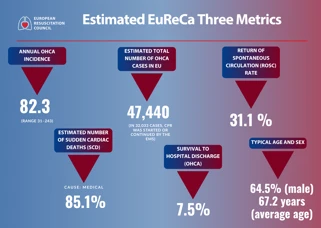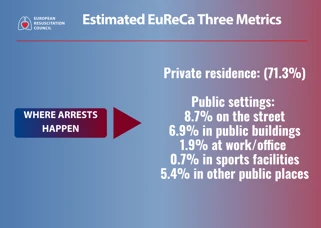Did You Know (Facts & Figures)
Here are recent facts and figures about cardiac arrest in Europe, particularly focusing on out-of-hospital cardiac arrest (OHCA), drawn from the latest studies and registries.


Additional Insights and Trends
Variation across countries/regions is large. Differences in survival are influenced by EMS response times, bystander CPR rates, AED availability, post-resuscitation care, and public awareness.
Bystander CPR matters a lot. In places with higher rates of bystander CPR (including those with telephone-assisted dispatch instructions), survival is generally better.
Shockable rhythms (ventricular fibrillation or pulseless ventricular tachycardia) when present, are associated with better survival odds. But many arrests are non-shockable when EMS arrives.
Resuscitation attempted by EMS: Not all OHCAs are treated by EMS (some arrests aren’t attempted, or aren’t witnessed). The incidence numbers usually refer to treated cases.